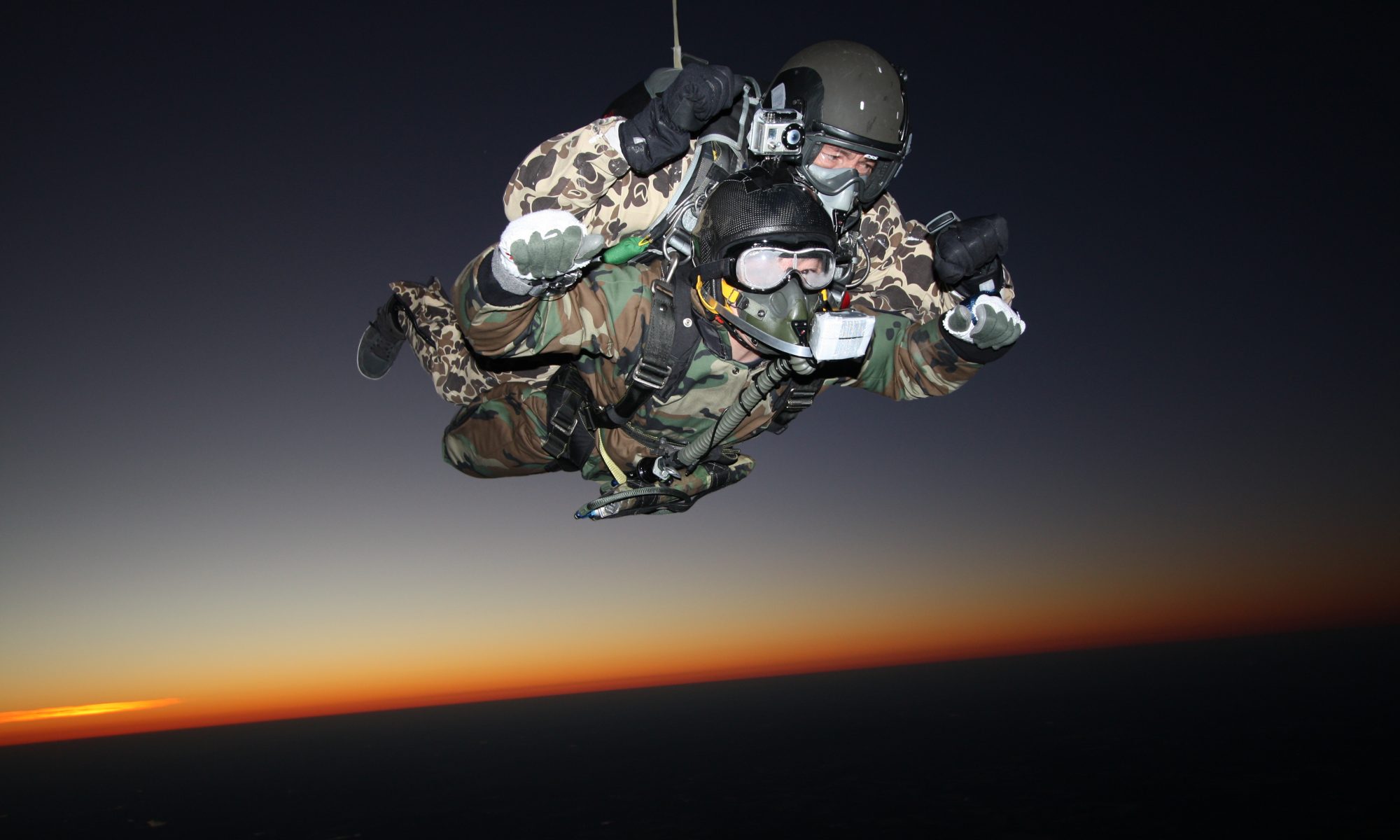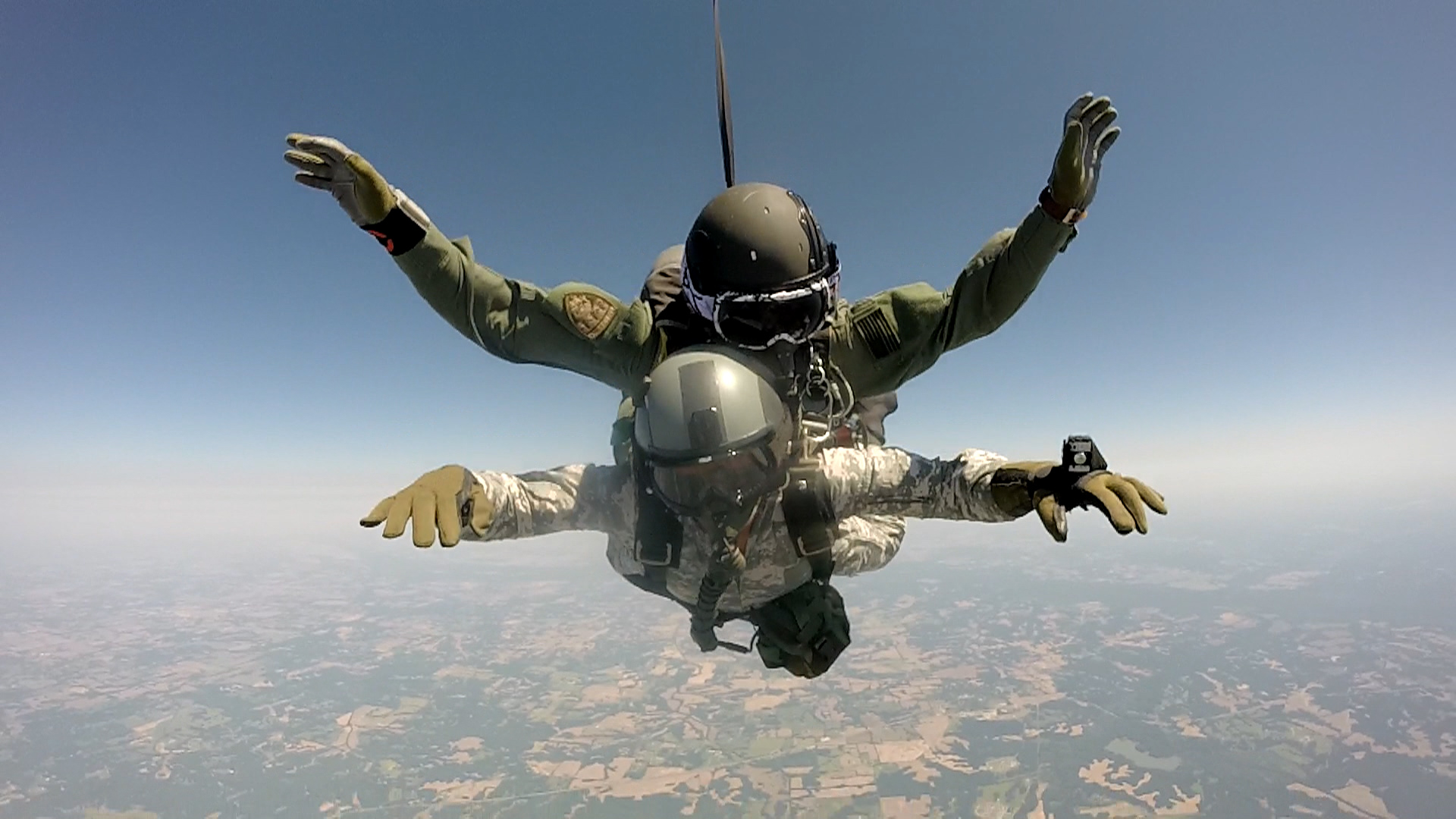Halo Meaning Military - When it comes to skydiving, higher is better - right? The short answer is yes! If you open your parachute at the same height, jump from the plane from a higher height, giving you the opportunity to freefall. The long answer is… yes! However, there are some things to know about skydiving that are interesting and useful when you're trying to skydive for the first time. You'll hear the term HALO Skydive, which stands for High Altitude Low Open - so let's take a look at both what that means, and how it affects you. for you...
Not intended for military use when jumping from an airplane and landing safely on the ground, it was first used during World War 2. Military parachuting was, and is, a way to keep soldiers (and gear, crates, cars, etc.) ) where you cannot land the plane. HALO jumps are created by secret special forces as a way to get to where you really want to be without anyone knowing about it, with the general idea that even if you have fancy radar equipment and know that the plane just Flying - there is none. Telling when, where or even if someone jumps out of it. A low opening means landing as quickly as possible by sending your parachute relatively close to the ground. Another way to do this is HAHO (High Altitude High Opening). Today's 'square' parachutes are very steerable, so it is possible (with a lot of extra clothing and some navigation technique) to jump very high, deploy your parachute quickly, and then fly far away from your aircraft's tracking - just just your enemy
Halo Meaning Military

HALO is a fancy term sometimes used by skydiving professionals to be able to provide extra altitude. For public skydiving, people typically open their parachutes at about 3,000 or 4,000 feet, which allows for less drop and a better chance to fly around and land in the sky.
Halo Infinite: How To Get Credits
As you go higher, the air gets thinner, and regulations set by the United States Parachute Association (USPA) say you must breathe oxygen in an airplane once you go above 15,000 feet. Going above 15,000 feet is literally the highest jump, and if you're lucky some drop zones may offer that (like ours!). The efficiency and added expense of having oxygen on board means that skydiving is usually below 15,000 feet - giving you a minute of shock. The longer the freefall time the better, so the ability to jump higher is unique and definitely worth investing in on your first, especially skydive. We offer jumps up to 18,000 feet - which adds 20 seconds to your shock!
The height of a HALO jump is basically any skydive that takes place above 15,000 feet - but the highest a HALO jump can be. The highest skydives in history began in 1959, when a man named Joseph Kittinger jumped from a balloon at an altitude of 102,800 feet—a record that stood for 53 years until it was broken in 2012 by Austrian Felix Baumgartner (127 , 851 feet) and again two years later by Google tech dude Alan Eustace (135, 889 feet).
Skydiving is awesome however (sensible) height you do it. If you go from a standard height or a HALO style jump you will remember it forever. We are proud to be one of the few places able to offer the option of high altitude skydiving, and we look forward to sharing the skies with you soon.
Greatly increased Receive from 18,000 feet. It was July 2, 2016. This was my 2ndtandem flight. I will definitely be back. Recommend Skydive Tecumseh to everyone it's a great way to start your day. I am 63 years old and come back every year. Very professional and friendly staff. I like it very much. This article contains a list of geral references, but does not contain sufficient information about inline. Please help improve this article by providing more accurate information. (August 2011) (Learn how and how to remove this template message)
Halo Infinite Dev Discusses New Co Op Achievements And Headmaster
High-altitude military parachuting, or military free fall (MFF), is a method of delivering military personnel, military supplies, and other military equipment by air. At the height of the free-end parachute insertion site. Two methods are used: HALO (High Altitude - Low Oping, often called HALO Jump) and HAHO (High Altitude - High Oping).
In the HALO procedure, the parachutist opens the parachute at an altitude after free-falling for some time, while in the HAHO procedure, the parachutist opens the parachute at an altitude several seconds after jumping onto the plane.
Although the HALO system was first developed for military use in the 1960s, in recent years the HALO parachute design has been used in non-military applications, including in the form of skydiving.
In the military, HALO is also used for the delivery of supplies, equipment or personnel, while HAHO is used exclusively for personnel. Soldiers jump between 15,000 and 35,000 feet (4,600 and 10,700 m) in a typical HALO/HAHO insertion.
Alliances Vs. Partnerships > U.s. Department Of Defense > Story
Military parachutists often reach top speeds of 126 mph (203 km/h), with jump times of less than two minutes.
The HALO process dates back to the 1960s when the United States Air Force began experimenting following earlier work by Colonel John Stapp in the 1940s.
On survivability for pilots ejecting at high altitudes since the early 1950s. Stapp, a biophysicist and physician, applied himself to rocket testing to study the effects of high G-forces. Stapp also solved many high-altitude flight problems in his early career for the US Air Force, reaching altitudes of up to 45,000 feet (14,000 m). He then helped create the pressure fitting and injection seat, which has been used in airplanes ever since. As part of the experiment, on August 16, 1960, Colonel Joseph Kittinger made the first high jump, 19.5 miles (31.4 km) above the Earth's surface. Kittinger's Fred and United States Naval Parachute Test Jumper Joe Crotwell were also mentors and test jumpers in the first program. The system was first used in combat during the Vietnam War in Laos by members of MACV-SOG Recon Team Florida. US Navy SEAL teams expand HALO systems to include submarines and other large objects.
This technique is used to airdrop supplies, equipment or personnel at high altitudes, where the aircraft can fly above the air-to-air missile (SAM) level without posing a threat to traffic or transportation. In the event that anti-aircraft guns are used near the drop zone, the HALO system also minimizes the cyclist's exposure to flak.
Riggers Are The Foundation For Every Parachute In The U.s. Army
For military cargo airdrops, rigid loads are clipped and pulled out of the aircraft by gravity. The load moves to a drop point under the canopy.
In a HALO maneuver, a parachutist will jump from an airplane, free fall for a period of time at the terminal, and sound off at an altitude as low as 3,000 feet (910 m) AGL below the target. The combination of low speed, low forward airspeed, and the use of small metal only helps to defeat radar and reduce the time the parachute is visible to observers in the debris, which can lead to body penetration.
The HAHO system is used to place personnel in high altitude areas where the aircraft cannot fly in the sky without threatening the jumpers. Additionally, HAHO parachute jumps are conducted in Amy areas under the cover of military personnel (special operations), in case the operation secret would be disturbed by the noise of parachutes operating at low altitude.

The HAHO jump also allows for longer trips due to the dwell time, allowing trips in excess of 40 miles (64 km).
Seal Team 6 Parachute Skills Distinct Among Special Operations Units
In a HAHO exercise, the jumper will jump out of the plane and deploy the parachute immediately after leaving the plane. The jumper will use a compass or GPS device for navigation to fly for 30 or more kilometers (50 miles). The jumper must use route details and terrain features to arrive at his desired landing spot and adjust his course for changes in wind speed and direction. If deployed as a team, the team will form a group in the air with their parachute. Typically, the jumper in the lowest position will set the pace and follow directions for the other team members. HAHO insertions (except training) should be performed at night.
When
Military police helmet halo reach, military halo jump, halo military ranks, halo acronym military, halo reach military ranks, halo military term, military halo, halo reach military police, military police helmet halo, halo military police, military halo suit, military halo helmet

0 Comments